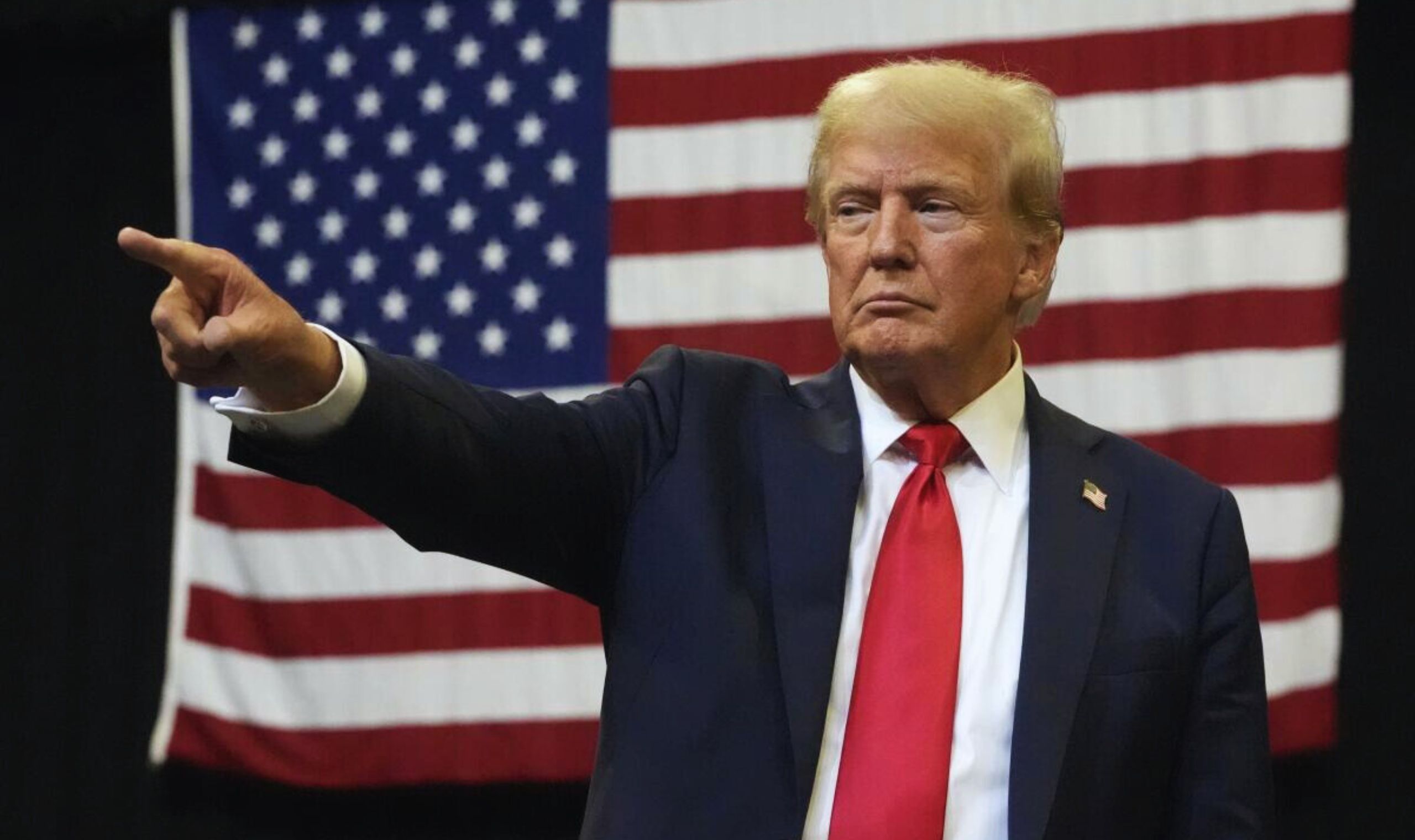The India Renewable Energy industry, specifically solar, is now keeping a close eye on the emerging contours of the US political scenario. Donald Trump has once again publicly expressed his scepticism toward renewable energy projects, and this is increasingly worrying the Indian industry regarding the potential implications for Indian companies that export solar modules and other forms of renewable technology to the US.
The recent rhetoric from Trump has increased worries in many leading Indian companies that import solar modules into the U.S. More poignantly, this impact is felt as India is importing most of its solar cells from China, a fact that might make trade dynamics complex if protectionist measures come into play.
Major Indian Players in the Solar Sector and Their U.S. Exposure
For instance, such moves in the US from its current position could impact key Indian players like Tata Power, Adani Green Energy (Adani Solar), Premier Energies, and Waaree Energies. The stock responses of these firms have been different – while Waaree Energies recently gained some about 17% in five sessions, stocks of Tata Power declined marginally.
Naturally, the policy implications for changes in U.S. policy are significant. If it either rolls back clean energy measures or introduces trade restrictions, the export earnings of these Indian companies will suffer. Since many Indian solar firms have gradually increased their focus on international markets, a policy shift may force them to recalculate their growth strategies.
The Impact of Protectionist U.S. Policies
Nirav Karkera is the research head at Fisdom, and when asked to comment on renewable energy: “The theme will definitely be in focus, though it’s uncertain if that will be positive or negative.” He feels that there is a stark divergence between the Trump administration’s stance on energy and the overall trends for clean energy. That being said, an administration sceptical about renewable energy may impact global investments in clean energy, thereby forcing down demand in the U.S. market.
The US, which has high capital costs for renewable energy production, might impose tariffs, enforcement of anti-dumping duties or incentives on solar production in the domestic economy.” According to Rupesh Sankhe, senior analyst at Elara Capital, this may affect exports of Indian solar and renewable energy equipment. “The real impact could be felt later in the medium term,” he adds.
However, a sustained reduction in US demand for imported solar products can compel Indian manufacturers to reorient themselves. For example, Waaree Energies has to look for alternative markets or reduce its expansion plan in the US if local manufacturing becomes important for the US.
Offshore Wind: A Potential Setback in Policy Alignment
The American approach to offshore wind energy won’t be immune to compromise either. Before even taking office, President Biden had set aspirational goals for offshore wind but had identified areas that could generate up to 100 gigawatts. The initiative is one of the several measures Biden has taken as part of his commitment to decarbonize the power sector by 2035, largely driven by the Inflation Reduction Act (IRA), which promotes renewable projects. In case Trump returns to office, offshore investments will most likely slow down, as well. His concerns over high capital costs and tariff implications will be a major factor in this.
Great support for clean energy was given by Biden signing the Inflation Reduction Act, which will be sponsoring huge subsidies for solar and wind projects, Trump may not be able to totally dismantle IRA; however, there is a change in his priorities that will derail the momentum the IRA gives to the renewable sector. Analysts believe that most of the subsidies will stick due to bipartisan approval, especially in states that are experiencing IRA-linked investments in green infrastructure.
Bigger Issues Confronting the Indian Renewables Sector
While potential changes in U.S. policies cause an issue, the Indian renewable sector is still reeling with several internal issues. With earnings downgrades resulting from economic constraints, several problems plague the sector on account of its growth issues. With an increasingly high percentage of domestic economic factors going towards making the sector unstable and less profitable rather than merely interrelated international policies, the sector is gaining some additional depth.
These internal challenges come at a critical time for India, which is committed to meeting bold renewable energy targets in its quest to reduce reliance on fossil fuels. The growth trajectory of the sector would thus depend not only on international trade policies but also on how Indian firms can overcome these challenges related to limited financing options and bottlenecks in regulation.
Opportunities Amid Trade Realignment
Despite this, there could be a few silver linings for the renewable industry of India as the situation develops. Experts believe that since Trump has been historically critical of China, the imposition of more imminent and difficult tariffs on Chinese imports might find India enjoying better competitiveness than the US. If tariffs are higher in China compared to India, then our competitiveness will improve,” says Siddhartha Khemka, head of research at Motilal Oswal Financial Services. This may be an opportunity for Indian exports to contract their share of the U.S. market.
Fisdom’s Karkera concurs: “This could present an opportunity for India since U.S. tariffs and anti-dumping measures would safeguard their home economy.” However, at the same time, these would create a new set of challenges for Indian companies, especially if the U.S. administration raises restrictions on imports from China because Indian solar products contain Chinese-made components and have interdependent supply chains.
The Way Forward for India’s Renewable Energy Industry
The potential policy changes in the United States form part of a broader global realignment that will impact renewable energy. Indian renewable companies should diversify their export markets, possibly going for other markets in the Asia-Pacific region, Africa, and Europe, to hedge on risks coming out of U.S. policy shifts. Further, there are opportunities for companies to invest in localizing supply chains, minimizing dependency on imports from China, which will further boost India’s self-reliance in clean energy production.
Indian renewable companies may also seek protection for growth through government support in terms of policy incentives, rising subsidies, and developing and advancing technology. The Indian government has already shown interest in accelerating the solar and wind projects and is more likely to make moves to further prop the industry if U.S. demand falters. Programs like the Production-Linked Incentive The Indian government has now established a scheme to encourage domestic manufacturing capacity in solar components of the latest ones are to the top.
Conclusion: Preparing for the Dynamic Renewables Scenario
The Indian renewable sector stands at an important crossroads, as the vector of its development is influenced by both exogenous and endogenous factors. The renewed possibility of resurfacing protectionist U.S. policies coupled with India’s reliance on Chinese imports may trigger a potentially contentious business environment for Indian clean energy enterprises. Keeping this in view, enterprises could thus be pragmatic and employ a more adaptive strategy so that they are ready for an explosion of probabilities in the face of emergent opportunities.
While the U.S. policy stance is undoubtedly going to impact the dynamics of the market, India’s renewable industry has been resilient and adaptable so far. The risk associated with it is likely to reduce further as Indian renewable firms through diversification of markets, localizing supply chains, and pushing for supportive domestic policies work together to have reduced risk and capitalize on growth opportunities in a rapidly changing landscape of energy globally.
This adaptability will be crucial as companies ride the storm of both the uncertainties of international politics and the challenges of domestic economic constraints. With the right strategies, Indian renewable majors could not only mitigate the impact of change in U.S. policy but also position themselves for sustained growth in the global green energy market.















0 Comments